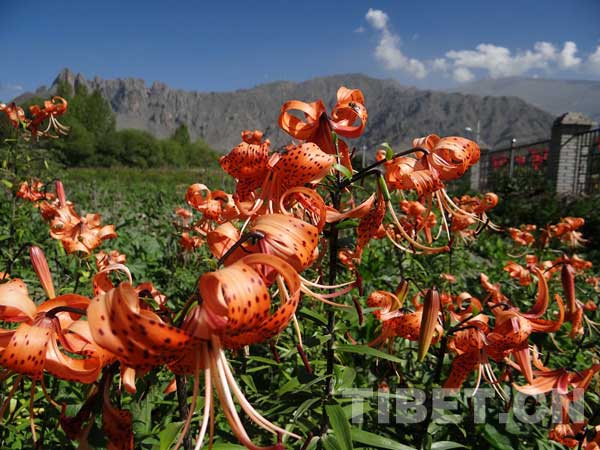In recent days, a stretch of red lilies are vying with each other for blossom in the agricultural science demonstration area of the Tibet Academy of Agricultural and Animal Husbandry Sciences. It has attracted many people to take photos of these beautiful flowers with black marks on curling petals.

Red lilies blossoming in the Tibet Academy of Agricultural and Animal Husbandry Sciences [Photo/China Tibet Online]
Dr. Zeng Xiuli, the expert of the Wild Fruit Tree Panel of the Vegetable Department of the Academy, said "We found by accident a batch of wild Lanceleaf Lily Bulb resources during an expedition when we decided to take them back for domestication test. And finally we succeeded this year with hard efforts."
Lanceleaf Lily, also named red lily, is a specie native to China, Japan and North Korea. With thick bulbs and stems, it has a high value when made into food and medicine. Its big flowers open for a long time, a nice ornamental flower for appreciation.
This batch of lanceleaf lilies grow in Nyingchi Prefecture(of Tibet Autonomous Region) with a relatively low altitude and moist temperature. They are somewhat difficult to grow in Lhasa. It is introduced that, after domestication, this batch of lilies grow only shorter than the wild ones while no noticeable changes have been observed in their colord, numberd of flowers and stems. They still present bright color.
"The domestication of lanceleaf lilies is able to offer a new variety to the green project; meanwhile lanceleaf lily can be cultivated as pot plant itself," said Zeng Xiuli, who will continue to research on this batch of lanceleaf lilies.
